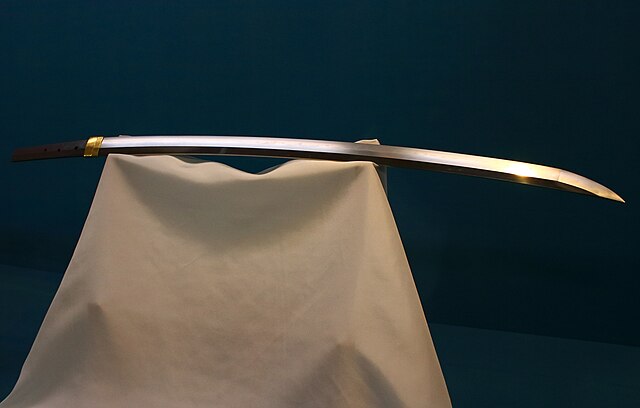Iaijutsu (居合術) is a combative quick-draw sword technique. This art of drawing the Japanese sword, katana, is one of the Japanese koryū martial art disciplines in the education of the classical warrior (bushi).
Iaijutsu
Niina Gyokudo, soke of Mugai Ryu, demonstrates the Inchuyo technique.
A katana is a Japanese sword characterized by a curved, single-edged blade with a circular or squared guard and long grip to accommodate two hands. Developed later than the tachi, it was used by samurai in feudal Japan and worn with the edge facing upward. Since the Muromachi period, many old tachi were cut from the root and shortened, and the blade at the root was crushed and converted into a katana. The specific term for katana in Japan is uchigatana (打刀) and the term katana (刀) often refers to single-edged swords from around the world.
A katana modified from a tachi forged by Motoshige. Bizen Osafune school influenced by the Sōshū school. 14th century, Nanboku-chō period. Important Cultural Property. Tokyo National Museum
Mei (signature) and Nakago (tang) of an Edo period katana
A Sōshū school katana modified from a tachi forged by Masamune. As it was owned by Ishida Mitsunari, it was commonly called Ishida Masamune. Important Cultural Property. Tokyo National Museum
A Sōshū school katana modified from a tachi, Kiriha Sadamune, forged by Sadamune, son of Masamune. 14th century, Kamakura period. Important Cultural Property. Tokyo National Museum






